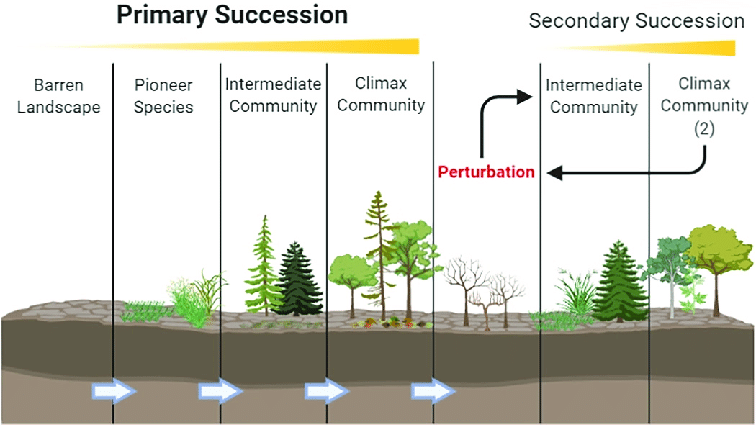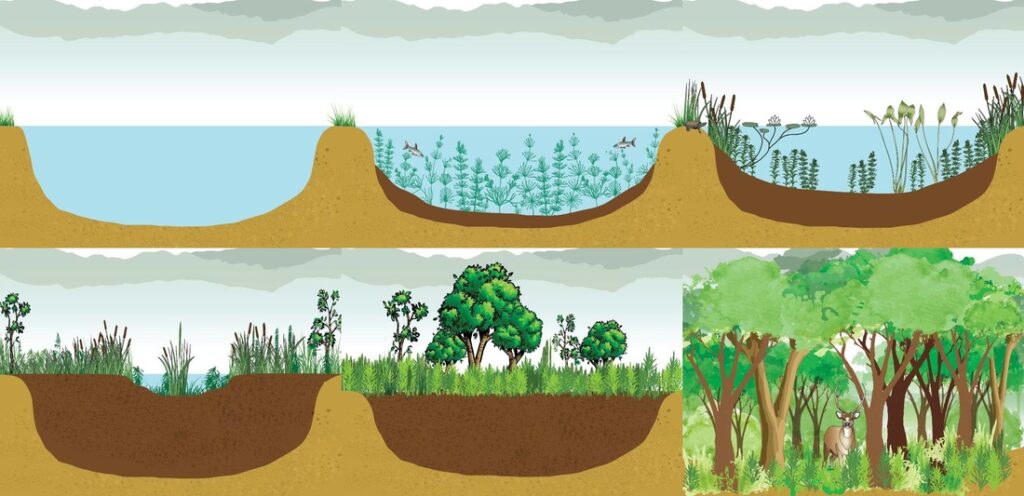(par 3. 9.2) Plant Succession

Introduction Succession is a directional non-seasonal cumulative change in the types of plantspecies that occupy a given area through time. It involves the processes of colonization, establishment, and extinction which act on the participating plant species. Most successions contain a number of stages that can be recognized by the collection of species that dominate at that point in […]
(par 3. 9.2) Climax community

From Wikipedia, the free encyclopedia The Daintree Rainforest in Queensland, Australia is an example of a climax forest ecosystem. In ecology, climax community, or climatic climax community, is a historic term that expressed a biological community of plants and animals and fungi which, through the process of ecological succession the development of vegetation in an area over time, had reached a steady state. This equilibrium was thought to occur because the climax […]
(par 3. 9.1) Origens of ‘ecosystem’ & related terms

http://www.barrameda.com.ar/ecology/the-ecosystem.htm Towards 1950 the ecologists elaborated the scientific notion of ecosystem, defining it as the unit of study of ecology. In agreement with such definition, the ecosystem is a delimited space unit, integrated on the one hand, by the alive organisms and the environment in which these are developed, and by another one, the interactions […]
